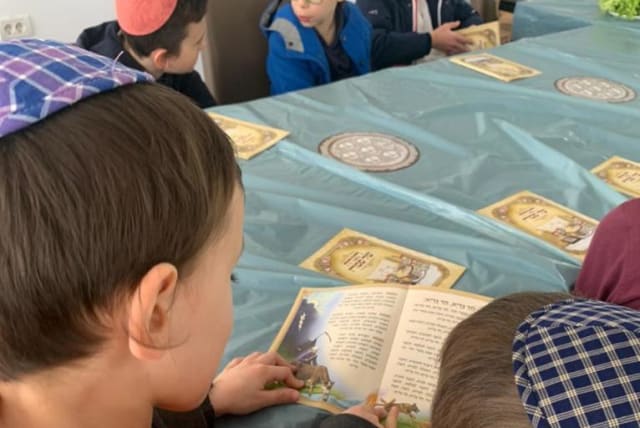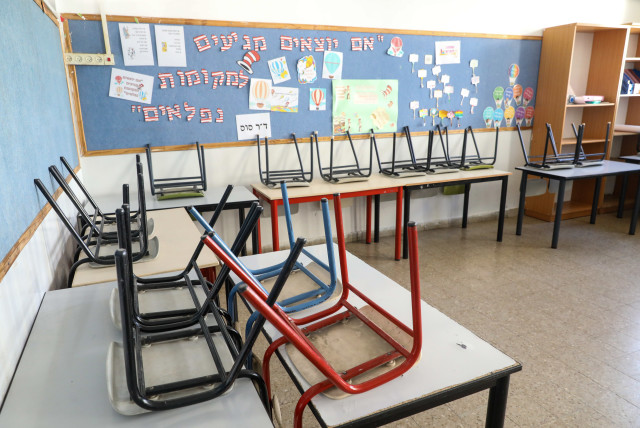'Designing New Pathways for Jewish Learners' - Jewish Education Project census - opinion

As Rabbi Waskow suggests, the Seder reminds us that the best learning happens when both leader and participant are teaching each other.
Rabbi Arthur Waskow wrote, “The Seder’s theory of education is that one-way learning is barren; all real education is an interchange between the generations. Even the old must learn; the tradition itself must change.”
While all Sederim are based on the same core principle that we should create an experience that helps us feel as if we personally were enslaved and redeemed, each family creates a ritual that reflects their setting and participants. Some families design their Seder for intellectual exploration, weaving contemporary issues throughout, while others create hands-on experiences that immerse children in the story.
The scripted questions and stories of the Haggadah are a starting place, but the real magic happens when we uncover and explore the questions that emerge from the participants in the moment. As Rabbi Waskow suggests, the Seder reminds us that the best learning happens when both leader and participant are teaching each other.
Jewish educators, rabbis, and cantors know this magic well. We approach the responsibility for creating learning moments with the utmost intensity, envisioning the rich lives our students and community members will live because of meaningful Jewish learning. We dream, design, and create with immense optimism and pride.
However, sometimes what we envision for our learners is not what they need from us. We plan without yet knowing the children and adults who will be part of our community. And we plan with little information about the larger context of our work, because so few comprehensive studies have offered us data to help us understand the field in which we work.
Therefore, part of our journey as educators is to reflect on our offerings, to recognize the ways in which our work is effective and impactful, and to recognize when the gift of learning, that we have offered up with love, may need to evolve to meet the needs of our students or the changing times.
The Jewish Education Project released a census
This past week, The Jewish Education Project released a census of supplementary schools, “From Census to Possibilities: Designing New Pathways for Jewish Learners.” The first such study since the AVI CHAI Foundation’s 2008 report, “A Census of Supplementary Schools in the United States: 2006-2007,” it chronicles the number of students and religious schools in the US and Canada.
The findings validate the perception, held by many, that there has been a dramatic decline in supplementary school enrollment during the intervening 15 years. The data, measuring registration in the 2019-2020 school year, indicates that about half of the non-Orthodox population is engaged in Jewish learning in supplementary schools. This suggests that we have an opportunity to both continue to improve the experience of those in existing programs, and create new pathways for children who are not yet participating in Jewish learning.
The Jewish Education Project’s partnerships with educators in the field allowed us to notice parallel trends. While we sensed that there was a decline in overall enrollment in supplementary schools, we also were aware of numerous bright spots. In response, we have been creating a road map of possibilities for the future.
WE GATHERED prominent practitioners to generate the desired outcomes of supplementary Jewish education. We also documented some bright spots and identified the design principles that underlie their success.
The report calls on us to rethink our current practice. The world around us is changing rapidly, causing families to face new challenges, have different needs, and develop new attitudes about Judaism’s role in their lives than those of previous generations.
As Jewish families develop increasingly secular identities, as the composition of Jewish households is more diverse; as Jewish Americans continue to assert pride in their Jewishness, especially in the face of growing antisemitism; and as the process of learning changes through the democratization of knowledge, Jewish education, too, must change. From “Census to Possibilities” is an invitation to join in exploration and experimentation so that we can give more children the benefit of a Jewish education.
We envision Jewish learning that puts families at the center, affirms diverse identities, and elevates cultural connections to Judaism – all while addressing the pain points of families struggling to fulfill their work commitments while providing their children with meaningful Jewish education. We imagine this learning being grounded in the formation of deep, meaningful relationships with children’s questions and interests at the center.
Our approach reflects our view that much like the Seder, Jewish education benefits from an ongoing cycle of reinvention that considers the societal context and the needs of the children we serve. And we believe that contemporary Jewish learning should offer both content that grounds children in the rituals and traditions of their heritage, and the opportunity for youth to explore the key questions of their identity, community, responsibility, and spirituality.
The Seder is a microcosm of the larger project of Jewish education. Both must be fluid, iterative, and informed by the moment and the participants. Periodically, we are faced with moments when our children remind us that we must deliver the education they need, even if it is not the education we envisioned in our mind’s eye.
This act of reflection and redirection can be challenging, but it can also create new sources of inspiration and excitement as we celebrate our successes and deepen our understanding of the learners we seek to serve. As Rabbi Abraham Isaac Kook teaches, “The old shall be renewed, and the new shall be made holy.” We invite you to join us in the holy work of renewing Jewish education to enable our students to live a meaningful life with Judaism at the center.
The writer, a rabbi, is managing director of New Models of The Jewish Education Project.
Jerusalem Post Store
`; document.getElementById("linkPremium").innerHTML = cont; var divWithLink = document.getElementById("premium-link"); if (divWithLink !== null && divWithLink !== 'undefined') { divWithLink.style.border = "solid 1px #cb0f3e"; divWithLink.style.textAlign = "center"; divWithLink.style.marginBottom = "15px"; divWithLink.style.marginTop = "15px"; divWithLink.style.width = "100%"; divWithLink.style.backgroundColor = "#122952"; divWithLink.style.color = "#ffffff"; divWithLink.style.lineHeight = "1.5"; } } (function (v, i) { });

